コンプリート! aspscr1-tfe3 127320
TF break apart probes in FISH analysis are most effective at detection of the fusion due to multiple partners of the gene ;This translocation results in the chimeric ASPSCR1TF transcription factor which drives tumorigenesis Complete surgical resection is crucial in allowing a successful outcome in these cases Here, we describe an 11monthold female infant who presented with a wellcircumscribed lesion of the tongue, with the clinical and radiologicASPSCR1TF as well as of key target molecules in ASPS vasculogenesis remains to be addressed Toward this end, the establishment of a reliable animal model that is useful in understanding the tumorigenic and vasculogenic mechanisms of human ASPS is desired It has recently been reported that conditional ASPSCR1TF

The T X 17 P11 25 Translocation A The Aspscr 1 Gene Is Located At Download Scientific Diagram
Aspscr1-tfe3
Aspscr1-tfe3-Another tumor, a rare subset of papillary renal cell carcinoma (RCC) with a distinctive pathologic morphology, has rearrangements of TF with ASPSCR1 or other fusion partner genes This tumor predominantly affects children and young adults, presents at an advanced stage but with an indolent clinical course, and is a distinct entity in theASPSCR1TF is the driving oncogenic feature of this tumor type;
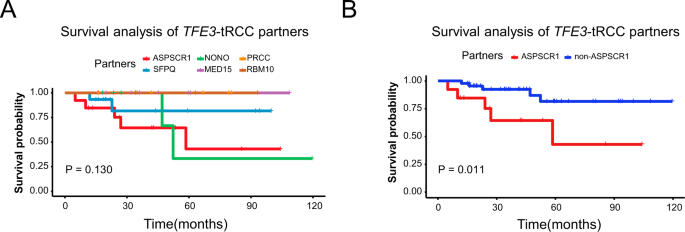



Integrated Exome And Rna Sequencing Of Tfe3 Translocation Renal Cell Carcinoma Nature Communications
Most common partner genes in MiT family translocation associated renal cell carcinoma are PRCC and ASPSCR1 (ASPL) (Am J Surg Pathol 16;) Melanotic subtype generally harbors the SFPQTF fusion and rarely ARID1BTF (Am J Surg PatholThe ASPSCR1TF gene fusion is the same gene fusion found in alveolar soft part sarcoma (ASPS), a rare pediatric neoplasm of uncertain histogenesis However, the translocation in Xp11 translocation RCC is balanced, which may contribute to the differences seen at the clinical and histopathologic levels between Xp11 translocation RCC and ASPSContext PubMed ASPSCR1 Title/Abstract AND TF Title/Abstract AND fusion Title/Abstract Functional or gene categories assigned by FusionGDB annotation Oncogene involved fusion gene, inframe and retained their domain * DoF score (Degree of Frequency) = # partners X # break points X # cancer types
Oncogenic rearrangements of the TF transcription factor gene are found in two distinct human cancers These include ASPSCR1TF in all cases of alveolar soft part sarcoma (ASPS) and ASPSCR1TF, PRCCTF, SFPQTF and others in a subset of paediatric and adult RCCs Here we examined the functiASPSCR1TF In order to characterize the fusion gene associated with ASPS and its role in sarcomagenesis, we created a mouse allele designed to express ASPSCR1TF conditionally Briefly, the Rosa26LSLAT3 allele was generated by isolating the type 2 ASPSCR1TF fusion gene transcript from total RNA obtained from a human ASPSASPL is a cofactor of the hexameric ATPase complex, known as p97 The central area in ASPL, containing both a SHP box and a UBX domain, is required for binding to the p97 Ndomain Results support a gainoffunction role for ASPSCR1TF contributing to proliferation and survival of cancer cells Promotes methylation of VCP by METTL21D
The ASPSCR1TF Fusion/Translocation FISH Probe Kit is designed to detect rearrangements involving the human ASPSCR1 and TF genes located on chromosome bands 17q253 and Xp1123, respectively Fusion of ASPSCR1 – also known as TUG, ASPL, ASPS, RCC17, UBXD9, UBXN9 or ASPCR1 – with the TF gene – also known as TFEA, RCCP2, RCCX1 orTF is also rearranged with ASPSCR1 and other genes in rare forms of renal cell carcinoma, which are most common in children 42 Interestingly, the TFASPSCR1 translocations in the renal cell carcinomas tend to be balanced, whereas the translocation is unbalanced in alveolar soft part sarcoma (Fig 1812A)A fusion partner was identified in 53/60 (%) cases, including 18 SFPQ (PSF), 16 PRCC, 12 ASPSCR1 (ASPL), 6 NONO, and 1 DVL2 We provide the first morphologic description of the NONOTF RCC, which frequently demonstrates subnuclear vacuoles leading to distinctive suprabasal nuclear palisading




Alveolar Soft Part Sarcomas Molecular Pathogenesis And Implications For Novel Targeted Therapies




Aspscr1 Protein Pan Troglodytes String Interaction Network
TF separation, and 4 had an atypical TF separation (presence of 2 normal X chromosomes and the derivative 17, but loss of the derivative X) This atypical rearrangement was confirmed using a TF/ASPSCR1 probe set Of the 2 diagnostic RCC cases, 1 was normal and 1 had an atypical TF separation, but reflex testing with theSoft Tissues Alveolar soft part sarcoma with t (X;17) (p11;q25) ASPSCR1TF The histogenesis of this tumour is still unknown, despite immunohistochemestry studies and electron microscopy It may have a myogenic origin, and might be a variant of rhabdomyosarcoma Rare tumour represents less than 1% of soft tissues sarcomas of adults and 12ASPSCR1TF alveolar soft part sarcoma Pubmed 17 ASPSCR1TF ASPSCR1TF Adenocarcinoma, Alveolar soft part sarcoma, renal cell carcinoma Pubmed



Cell Com



Aspscr1 Alveolar Soft Part Sarcoma Critical Region 1
Introduction TFtranslocation renal cell carcinoma (TFtRCC) is a rare subtype of kidney cancer, characterized by Xp112 translocations resulting in TF fusion with various partner genes To date, more than partner genes have been identified in fusions with TF, including SFPQ, ASPSCR1, NONO, PRCC, RBM10, MED15, etc Due to the variety of partners andTFF Alveolar softpart sarcoma (ASPS) is a rare malignant tumor typically occurring in patients in their s to 30s within the muscle and deep tissues of the extremities ASPS is slow growing and refractory to chemotherapy with a propensity to metastasize Prolonged survival is possible even with metastasis, although the longterm diseaserelated mortality rate is highThe hallmark of ASPS is a chromosomal rearrangement at 17q25 and Xp112 engendering an ASPSCR1TF fusion gene responsible for an aberrant transcription factor presumably enabling pathogenesisThis aberrant chimeric transcription factor retains the Nterminal DNA binding domain encoded by TF while the ASPSCR1 encoded portion probably




Aspl Tfe3 Oncoprotein Regulates Cell Cycle Progression And Induces Cellular Senescence By Up Regulating P21 Sciencedirect




Gene Of The Month Tfe 3 Journal Of Clinical Pathology
The ASPSCR1/TF fusion replaces the Nterminal portion of TF by the fused ASPSCR1 sequences, while retaining the TF DNAbinding domain, implicating transcriptional deregulation in the pathogenesis of ASPS Ladanyi et al (01) identified major and minor splice forms of the ASPSCR1 transcript which differ by the absence or presence of a 47Translocation t(X;17)(p11;q25) of this gene with transcription factor TF gene results in a ASPSCR1TF fusion protein in alveolar soft part sarcoma and in renal cell carcinomas Multiple alternatively spliced transcript variants have been found provided by RefSeq, Oct 11 Gencode Transcript ENST Gencode GeneNo fusionnegative case has ever been described Complete surgical excision, including lung metastasectomy when applicable, is the primary treatment, with limited benefit associated with chemotherapy or radiation There has been one published case of primary ASPS in the bladder
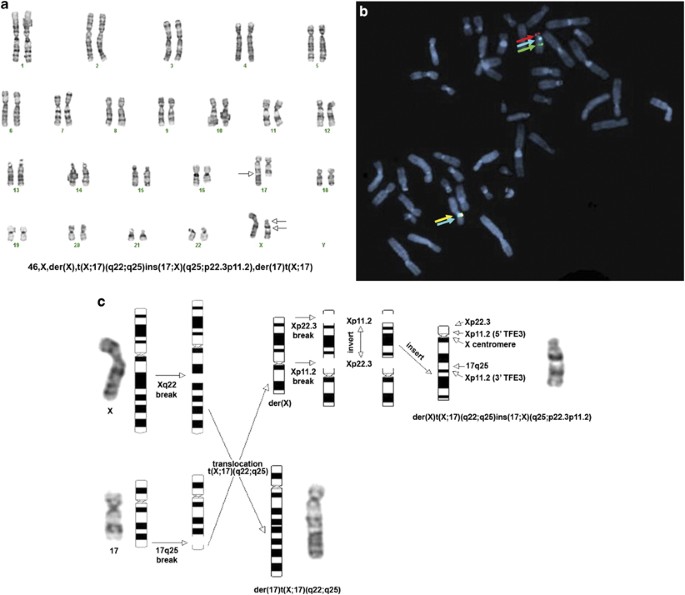



Molecular Cytogenetic Analysis For Tfe3 Rearrangement In Xp11 2 Renal Cell Carcinoma And Alveolar Soft Part Sarcoma Validation And Clinical Experience With 75 Cases Modern Pathology



Kidney Renal Cell Carcinoma With T X 17 P11 Q25 Aspscr1 Tfe3
Our objective was to identify the direct targets of ASPSCR1TF and how these targets confer resistance to doxorubicin The human cell lines ASPS1 and FUUR1, as well as mouse tumors driven by expression of ASPSCR1TF were subjected to nuclear fractionation and chromatin immunoprecipitation using antibodies against ASPSCR1 and RNAPol2The ASPSCR1/TF fusion replaces the Nterminal portion of TF by the fused ASPSCR1 sequences, while retaining the TF DNAbinding domain, implicating transcriptional deregulation in the pathogenesis of ASPS Heimann et al (01) identified the ASPSCR1 gene, which they called RCC17, partnered with TF in two 5yearold Belgian girls ofWhen a TF rearrangement is identified, reflex testing using the TF/ASPSCR1 probe will be performed Method Name A short description of the method used to perform the test Fluorescence In Situ Hybridization (FISH)




Positive Tumor Response To Combined Checkpoint Inhibitors In A Patient With Refractory Alveolar Soft Part Sarcoma A Case Report Jco Global Oncology
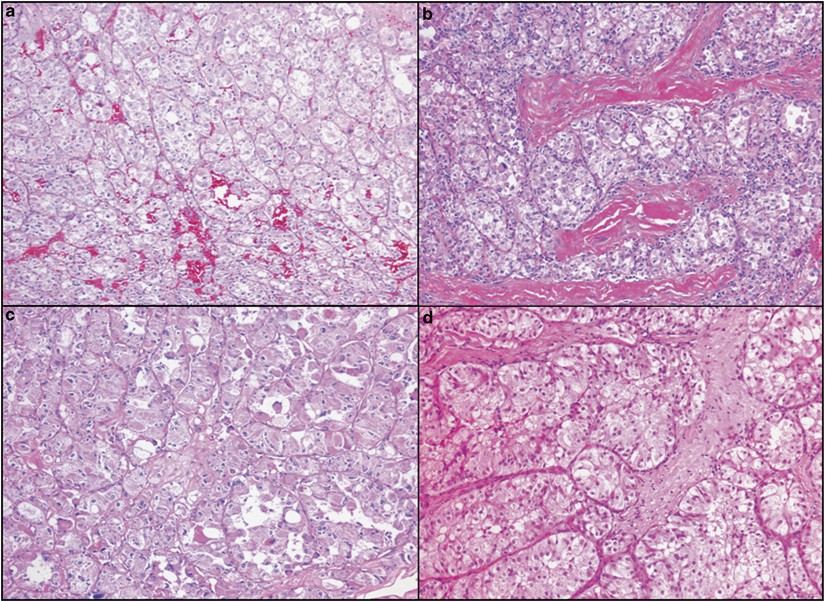



Molecular Cytogenetic Analysis For Tfe3 Rearrangement In Xp11 2 Renal Cell Carcinoma And Alveolar Soft Part Sarcoma Validation And Clinical Experience With 75 Cases Modern Pathology
3 ASPSCR1 TEXT A number sign (#) is used with this entry because some cases of alveolar soft part sarcoma have been found to be caused by fusion of the ASPSCR1 () and TF () genes Description Alveolar soft part sarcoma is an unusual tumor with highly characteristic histopathology and ultrastructureThe reciprocal 5' TF 3' ASPSCR1 is most often absent ASPSCR1 is fused in frame to TF exon 3 or 4 Abnormal Protein NH2 term ASPSCR1, fused to the C term of TF Oncogenesis might combine the effect of a fusion protein to that of gene(s) dosage Entity primary renal ASPSCR1TF tumour DiseaseThe ASPSCR1TF fusion was originally identified in 100% of alveolar soft part sarcomas (ASPS), a rare lung cancer variant with no known RCC association, and the SFPQTF fusion and possibly other TFfusions are also found in a subset of rare tumors known as perivascular epithelioid cell neoplasms (PEComas) 27,28 The existence of
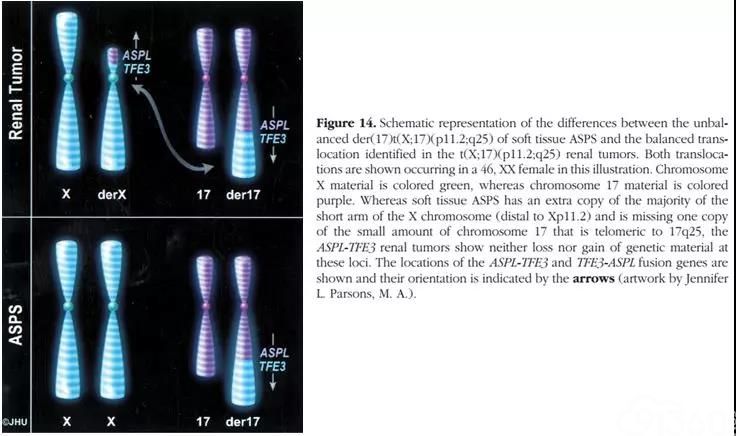



乱花渐欲迷人眼 Aspscr1 Tfe3融合在不同肿瘤中阳性类型表现不同




Integrated Exome And Rna Sequencing Of Tfe3 Translocation Renal Cell Carcinoma Nature Communications
Our results demonstrate that the most sensitive marker of alveolar soft part sarcoma was the presence of the ASPSCR1TF fusion transcript Thus, detection of the ASPSCR1TF fusion transcript was considered applicable for formalinfixed, paraffinembedded tissues with superior sensitivity as compared with TF immunohistochemical stainingYAP1TFfused hemangioendothelioma is an extremely rare malignant vascular tumor, with only a few dozen cases reported, most of which were single case reports or larger case series that combineThe ASPSCR1TF and ASPSCR1TFEB but not ASPSCR1TFEC and ASPSCR1MITF induced sarcoma The results suggest the presence of TF/TFEBspecific cofactors and mechanisms for tumorigenesis In order to identify such novel cofactors and functional motifs, human ASPS cellnuclear extract was incubated with TF or MITF proteins and TF or MITF




The T X 17 P11 25 Translocation A The Aspscr 1 Gene Is Located At Download Scientific Diagram




Modeling Alveolar Soft Part Sarcoma Unveils Novel Mechanisms Of Metastasis Cancer Research
These include ASPSCR1–TF in all cases of alveolar soft part sarcoma (ASPS) and ASPSCR1–TF, PRCC‐TF, SFPQ‐TF and others in a subset of paediatric and adult RCCs Here we examined the functional properties of the ASPSCR1–TF fusion oncoprotein, defined its target promoters on a genome‐wide basis and performed a highReport TF translocationassociated perivascular epithelioid cell neoplasms of the gynecological tract A conditional expression in mice of the fusion gene ASPSCR1TF from human alveolar soft part sarcoma (ASPS) generated a model that recapitulates the human tumor histologically and by expression profileASPSCR1 Tether containing UBX domain for GLUT4 ( TUG) is a protein that in humans is encoded by the ASPSCR1 gene This gene is a candidate gene for alveolar soft part sarcoma (ASPS) It has been found that ASPSCR1 can undergo oncogenic rearrangement with transcription factor TF gene, creating an aberrant gene that is a stronger




Tfe3 Zeta Corporation




Rt Pcr Findings Identification Of The Aspscr1 Aspl Tfe3 Fusion Download Scientific Diagram
Plasmid construction Nterminal FLAGtagged ASPSCR1TF was introduced into both the pMYsIRESGFP and pMYsIRESLuc vectors The fulllength ASPSCR1TF was cloned from a human ASPS case Artificial chimeric ASPSCR1 fusions between ASPSCR1 and TFEB, TFEC, or MITF were also generated by twostep PCR using primers encompassing both ASPSCR1 andAims Alveolar soft part sarcoma (ASPS) is a rare soft tissue tumour with unique morphology and a recurrent, non‐reciprocal translocation der(17)t(X;17)(p112;q25) leading to the fusion of ASPSCR1 (also known as ASPL) to the transcription factor TF Although diagnosis is straightforward in classical cases, tumours with atypical morphological features may be difficultASPSCR1TF fusion proteins appear to bring the TF DNA binding domain and nuclear localization signal under the control of the ASPS promoter , 42,




Surgicopathological Conference Presenter Changche Wu Md Supervisor Pinpen




Surgicopathological Conference Presenter Changche Wu Md Supervisor Pinpen
Aims Alveolar soft part sarcoma (ASPS) is a rare soft tissue tumour with unique morphology and a recurrent, nonreciprocal translocation der(17)t(X;17)(p112;q25) leading to the fusion of ASPSCR1 (also known as ASPL) to the transcription factor TF Although diagnosis is straightforward in classical cases, tumours with atypical morphological features may be difficult to classify solely onDisease ASPSCR1/TF renal cell carcinomas harbor the same gene fusion as alveolar soft part sarcoma, but belong to the family of Xp11 translocation RCC Xp11 translocation renal cell carcinoma (RCCs) harbor gene fusions involving TF transcription factor The The t (6;11) RCCs harbor a specific MALAT1 (Alpha) TFEB gene fusionIn RCC, TF translocation partners have been shown to include the ASPSCR1, SFPQ and NONO genes 3 Although RCC and ASPS have been shown to have identical ASPSCR1TF fusion transcripts, the t(X;17) translocation is consistently balanced in the former but usually unbalanced in the latter the derivative X chromosome is not seen in ASPS 4




Figure 1 From Mit Family Translocation Renal Cell Carcinoma Semantic Scholar




Technique For Differentiating Alveolar Soft Part Sarcoma From Other Tumors In Paraffin Embedded Tissue Comparison Of Immunohistochemistry For Tfe3 And Cd147 And Of Reverse Transcription Polymerase Chain Reaction For Aspscr1 Tfe3 Fusion Transcript
The Archer Fusion Panel 26, which assesses the fusion status of multiple genes involved in various tumors, detected a TFASPSCR1 fusion, confirming the diagnosis of Xp11 translocationassociated renal cell carcinomas Extrarenal renal cell carcinomas are very rare, with few reported cases in the literatureAlveolar soft part sarcoma (ASPS) is an exceptionally rare nonrhabdomyosarcomatous soft tissue sarcoma (NRSTS), characterized by the translocation t(X;17) p(112;q25) This translocation results in the chimeric ASPSCR1TF transcription factor whichTF Overexpression of TF is a sensitive and specific marker of Xp11 translocation in renal cell carcinomas TF is also expressed in alveolar soft part sarcoma the hallmark of which is a chromosomal rearrangement at 17q25 and Xp112 engendering an ASPSCR1–TF fusion gene Use of this antibody is an aid in the recognition of Xp11



Cell Com




Comparison Of Aspscr1 Tfe3 And Prcc Tfe3 Renal Cell Carcinomas Download Table
Breakpoint for translocation to form NONOTF, PSFTF and ASPSCR1TF oncogenes 2 Keywords Disease i Protooncogene Organismspecific databases DisGeNET i 7030 MalaCards i TF OpenTargets i ENSG Orphanet i , Alveolar soft tissue sarcomaBased on morphologic features (nested pattern) and the above IHC results including strong TF expression, ASPS was a strong consideration Although fluorescence in situ hybridization results were positive for TF gene rearrangement, the specific TF/ASPSCR1 rearrangement (X17Alveolar soft part sarcoma a bimarker diagnostic strategy using TF immunoassay and ASPLTF fusion transcripts in paraffinembedded tumor tissues Pang LJ, Chang B, Zou H, Qi Y, Jiang JF, Li HA, Hu WH, Chen YZ, Liu CX, Zhang WJ, Li F Diagn Mol Pathol 08 Dec;17(4) doi /PDM0b013ed68d7
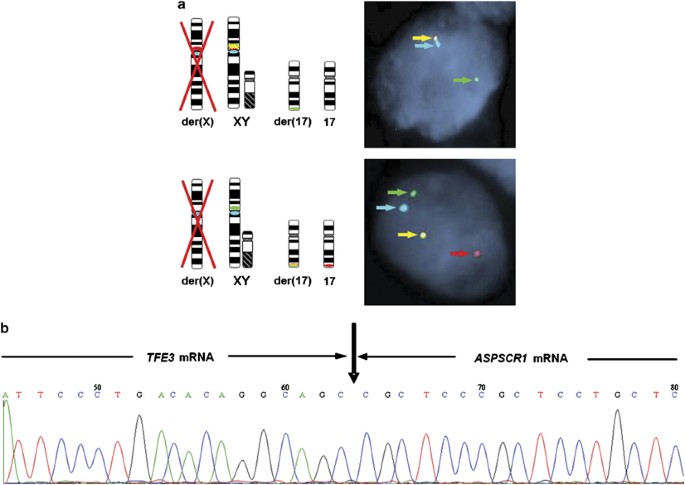



Molecular Cytogenetic Analysis For Tfe3 Rearrangement In Xp11 2 Renal Cell Carcinoma And Alveolar Soft Part Sarcoma Validation And Clinical Experience With 75 Cases Modern Pathology



Mit Family Translocation Renal Cell Carcinoma
Cases with ASPSCR1TF, SFPQTF, PRCCTF, and NONOTF gene fusion showed a wide variability in morphologic features, including invasive tubulopapillary pattern simulating collecting duct carcinoma, extensive calcification and ossification, and overlapping and high columnar cells with nuclear grooves mimicking tall cell variant ofSignificance By conditionally expressing in mice the fusion gene ASPSCR1TF from human alveolar soft part sarcoma (ASPS), we generated a model that recapitulates the human tumor histologically and by expression profile, enabling study of the conditions supportive of tumor development Mouse tumors demonstrated angiogenic gene expression in the frank absence ofASPSCR1TF fusion and several somatic copy number alterations, including the loss of 22q, are associated with aggressive features and poor outcomes Apart from tumors with MED15TF fusion
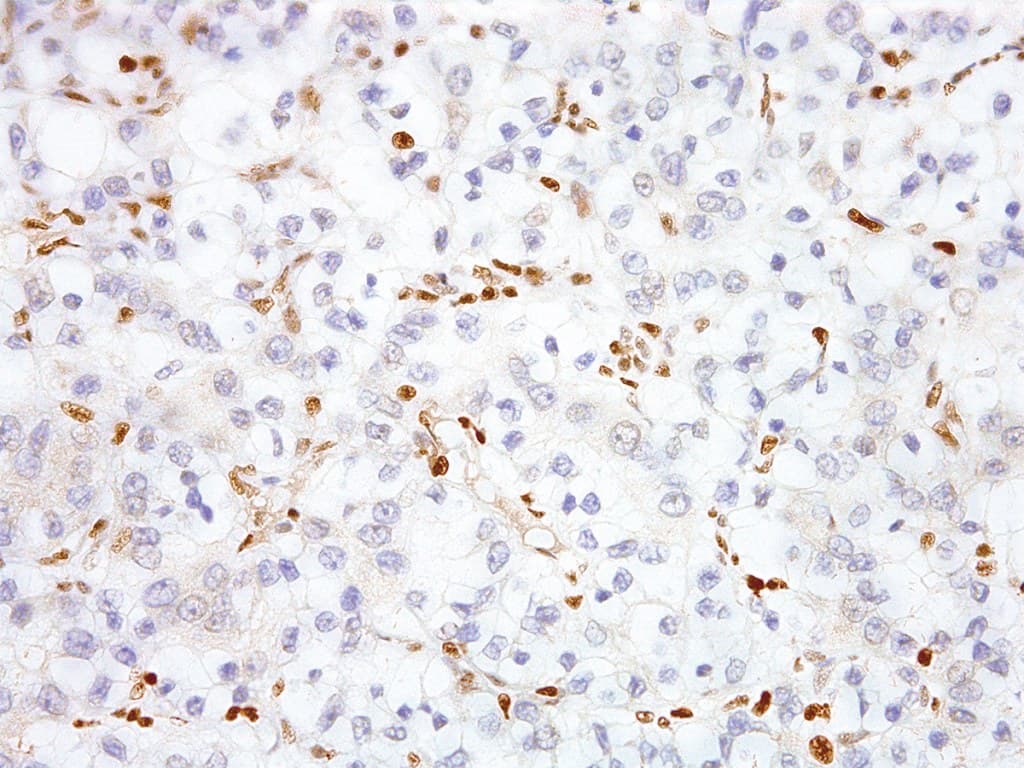



Anti Tfe3 Ce Ivd For Ihc Pediatric Pathology Clinisciences




X 17 P11 Q25 Aspscr1 Tfe3 Translocation Renal Cell Carcinomas Download Scientific Diagram
A total of five TF gene fusions (PRCCTF, ASPSCR1TF, SFPQTF, NONOTF, and CLTCTF) and one TFEB gene fusion (MALAT1TFEB) have been identified in RCC tumours and characterized at the mRNA transcript level A multitude of molecular pathways welldescribed in carcinogenesis are regulated in part by TF or TFEB proteins, including
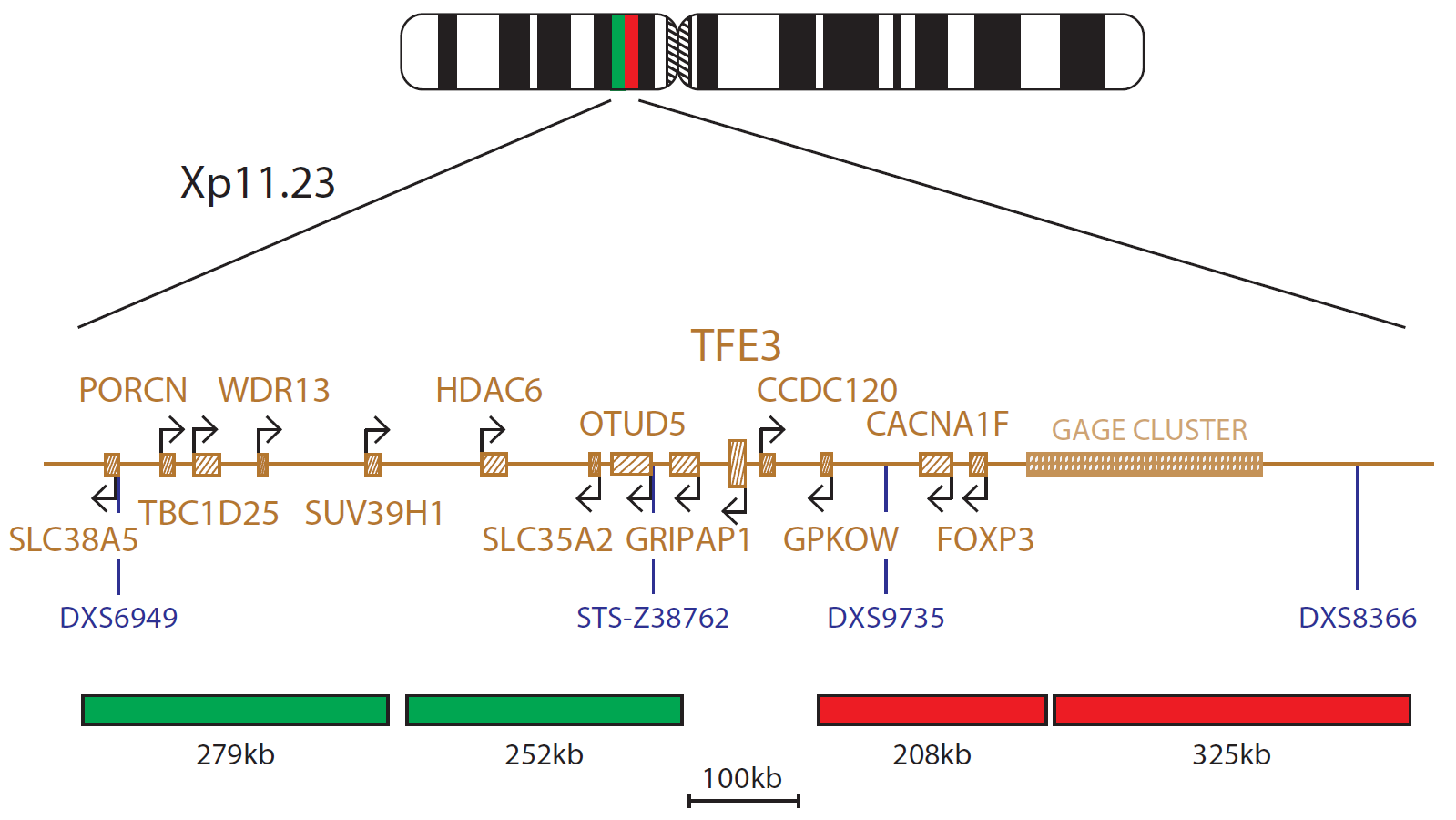



Cytocell Tfe3 Breakapart Fish Probe Ogt




Volume 26 Issue 6 Pages December 14 Ppt Download




Combining Integrated Genomics And Functional Genomics To Dissect The Biology Of A Cancer Associated Aberrant Transcription Factor The Aspscr1 Tfe3 Fusion Oncoprotein Kobos 13 The Journal Of Pathology Wiley Online Library




Aspscr1 Gene Genecards Aspc1 Protein Aspc1 Antibody




Aspscr1 Tfe3 Fusion Translocation Fish Probe Kit Cytotest




Molecular Genetics And Cellular Features Of Tfe3 And Tfeb Fusion Kidney Cancers Abstract Europe Pmc
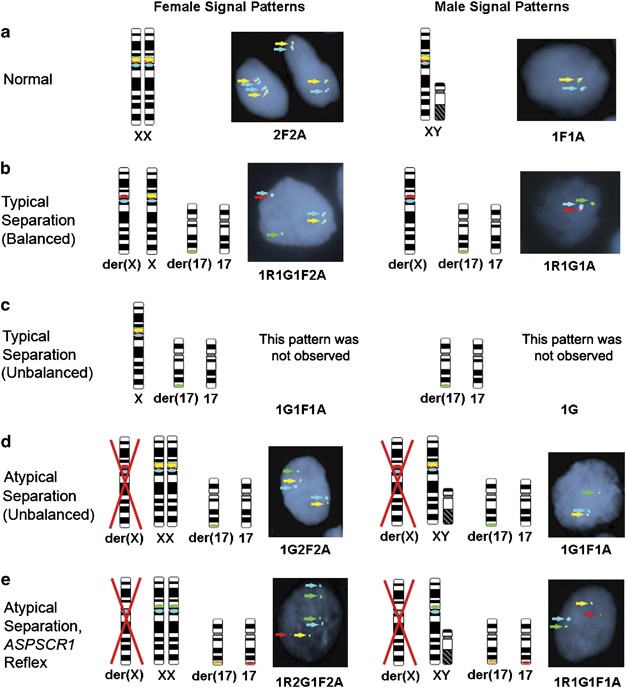



Molecular Cytogenetic Analysis For Tfe3 Rearrangement In Xp11 2 Renal Cell Carcinoma And Alveolar Soft Part Sarcoma Validation And Clinical Experience With 75 Cases Modern Pathology



1




Comparison Of Aspscr1 Tfe3 And Prcc Tfe3 Renal Cell Carcinomas Download Table



Kidney Renal Cell Carcinoma With T X 17 P11 Q25 Aspscr1 Tfe3




Comparison Of Aspscr1 Tfe3 And Prcc Tfe3 Renal Cell Carcinomas Download Table




Pdf Alveolar Soft Part Sarcomas Molecular Pathogenesis And Implications For Novel Targeted Therapies




Signaling Schematic For Asps Tumors And Novel Therapeutic Targets A Download Scientific Diagram
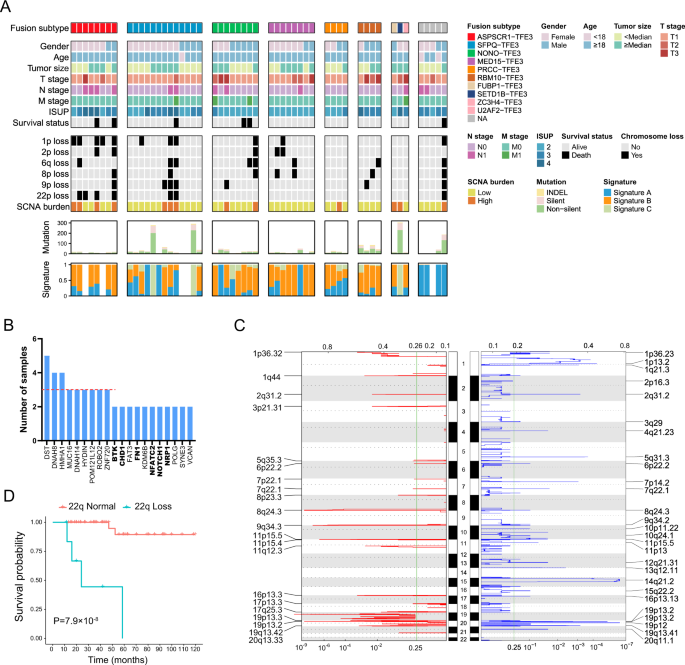



Integrated Exome And Rna Sequencing Of Tfe3 Translocation Renal Cell Carcinoma Nature Communications




Rt Pcr Findings Identification Of The Aspscr1 Aspl Tfe3 Fusion Download Scientific Diagram




Activity And Safety Of Crizotinib In Patients With Alveolar Soft Part Sarcoma With Rearrangement Of Tfe3 European Organization For Research And Treatment Of Cancer Eortc Phase Ii Trial Create Annals




Combining Integrated Genomics And Functional Genomics To Dissect The Biology Of A Cancer Associated Aberrant Transcription Factor The Aspscr1 Tfe3 Fusion Oncoprotein Abstract Europe Pmc




Volume 26 Issue 6 Pages December 14 Ppt Download




New Aspscr1 Tfe3 Renal Cell Carcinomas With T X 17 P11 Q25 A E H Download Scientific Diagram
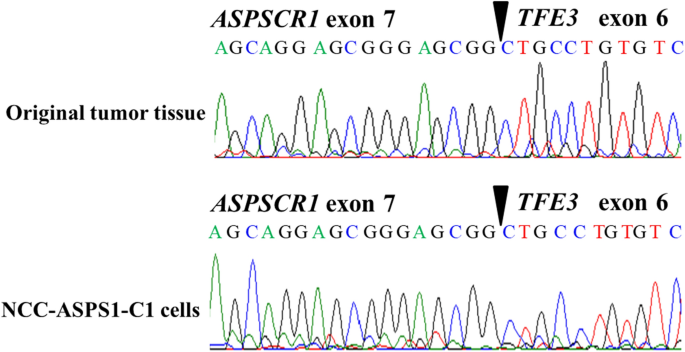



Establishment And Characterization Of Ncc Asps1 C1 A Novel Patient Derived Cell Line Of Alveolar Soft Part Sarcoma Springerlink




Alveolar Soft Part Sarcomas Molecular Pathogenesis And Implications For Novel Targeted Therapies
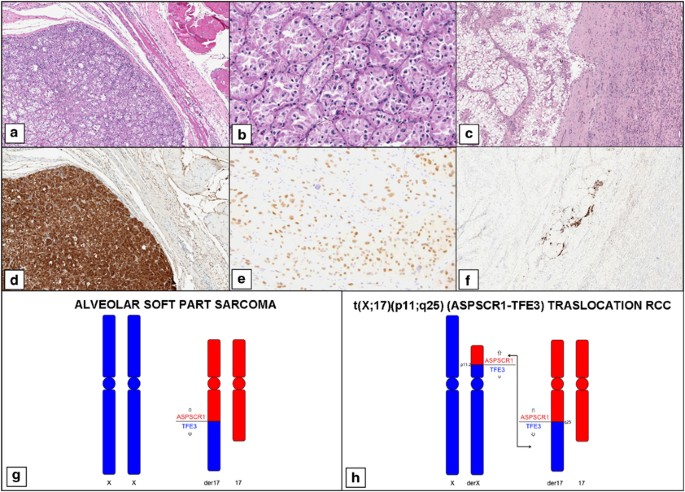



Differential Expression Of Cathepsin K In Neoplasms Harboring Tfe3 Gene Fusions Modern Pathology
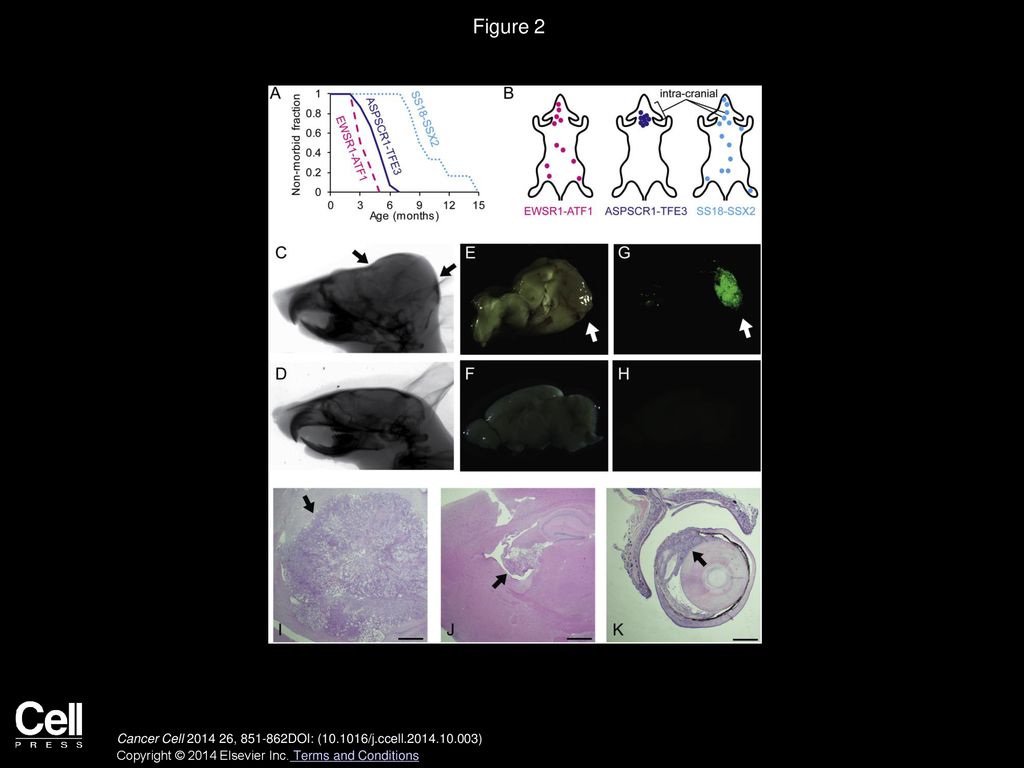



Volume 26 Issue 6 Pages December 14 Ppt Download
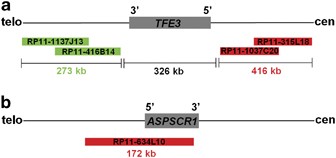



Molecular Cytogenetic Analysis For Tfe3 Rearrangement In Xp11 2 Renal Cell Carcinoma And Alveolar Soft Part Sarcoma Validation And Clinical Experience With 75 Cases Modern Pathology



Kidney Renal Cell Carcinoma With T X 17 P11 Q25 Aspscr1 Tfe3




Alveolar Soft Part Sarcoma Of The Bladder With Aspscr1 Tfe3 Gene Fusion As A Secondary Malignancy Sciencedirect



Cell Com




Pdf Tfe3 Fusions Activate Met Signaling By Transcriptional Up Regulation Defining Another Class Of Tumors As Candidates For Therapeutic Met Inhibition Semantic Scholar




Integrated Exome And Rna Sequencing Of Tfe3 Translocation Renal Cell Carcinoma Nature Communications




New Aspscr1 Tfe3 Renal Cell Carcinomas With T X 17 P11 Q25 A E H Download Scientific Diagram
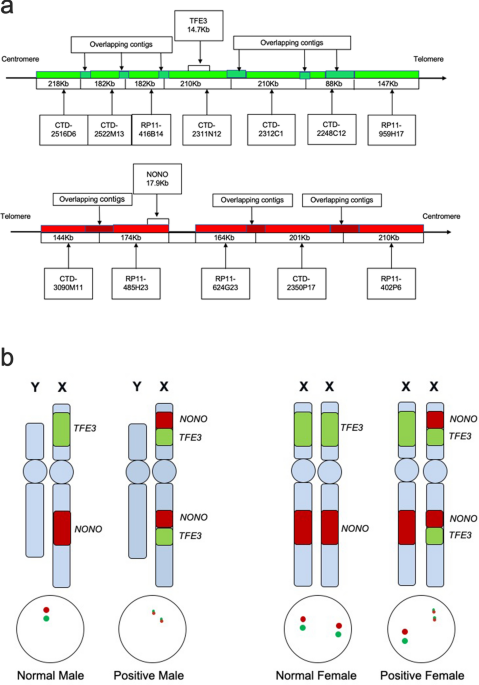



The Suitability Of Nono Tfe3 Dual Fusion Fish Assay As A Diagnostic Tool For Nono Tfe3 Renal Cell Carcinoma Scientific Reports




Tfe3 Gene Genecards Tfe3 Protein Tfe3 Antibody




Genetically Confirmed Aspscr1 Tfe3 Renal Cell Carcinomas Download Table
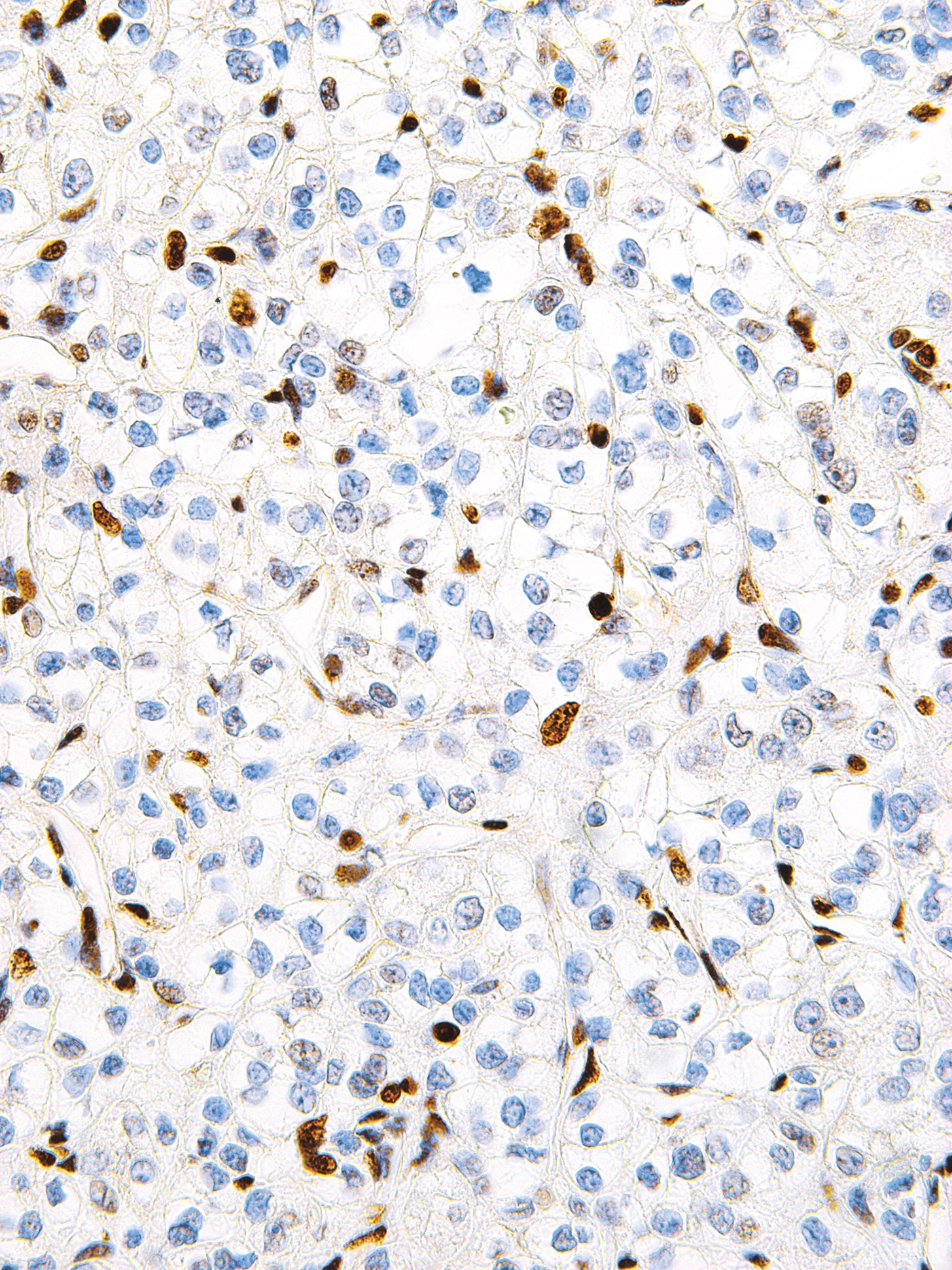



Geneab Tfe3 Attogene




The Fusion Oncogene Aspscr1 Tfe3 Directs Epigenetic Induced Autophagy In Alveolar Soft Part Sarcoma Barrott 19 The Faseb Journal Wiley Online Library



Molecular Genetics And Cellular Features Of Tfe3 And Tfeb Fusion Kidney Cancers Document Gale Onefile Health And Medicine
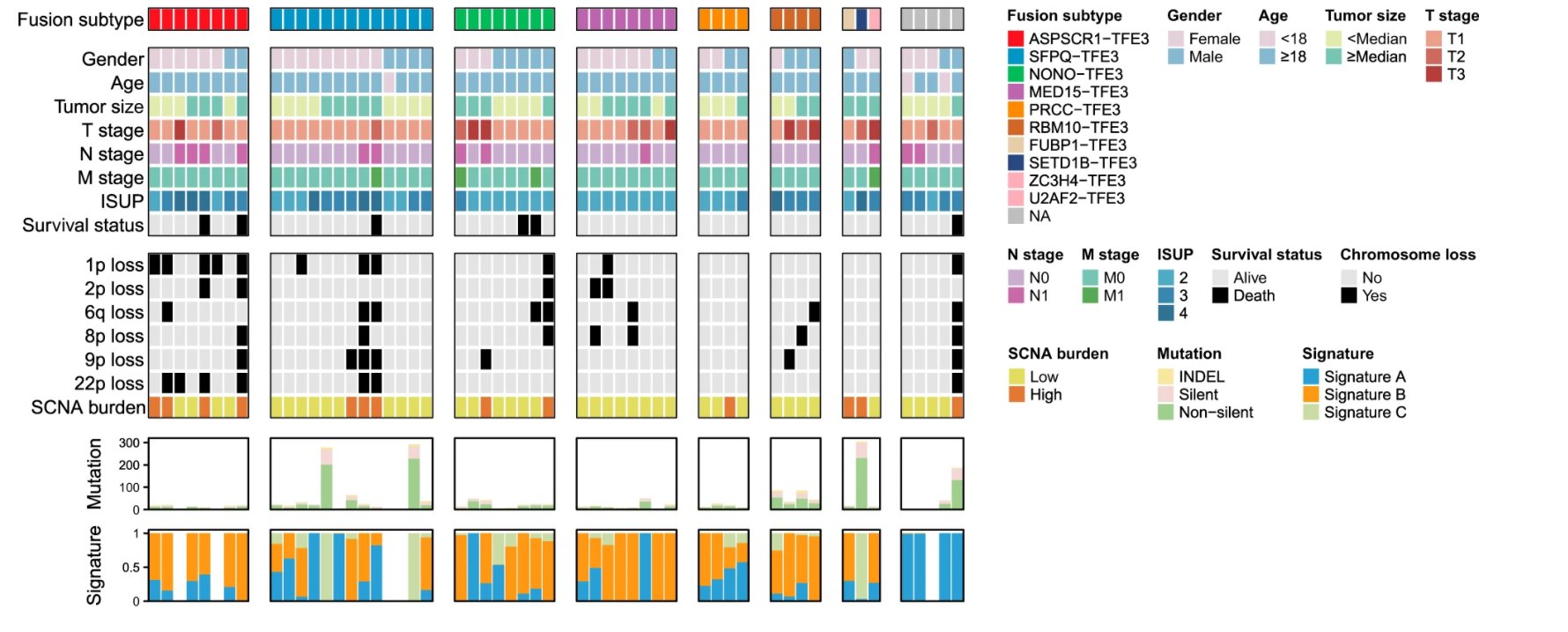



تويتر Nature Communications على تويتر Study Performs Genomic And Transcriptomic Profiling Of Untreated Primary Tfe3 Translocation Renal Cell Carcinoma Tumours And Reveals Potential Therapeutic Targets Cancerresearch T Co Cwarpnbtch
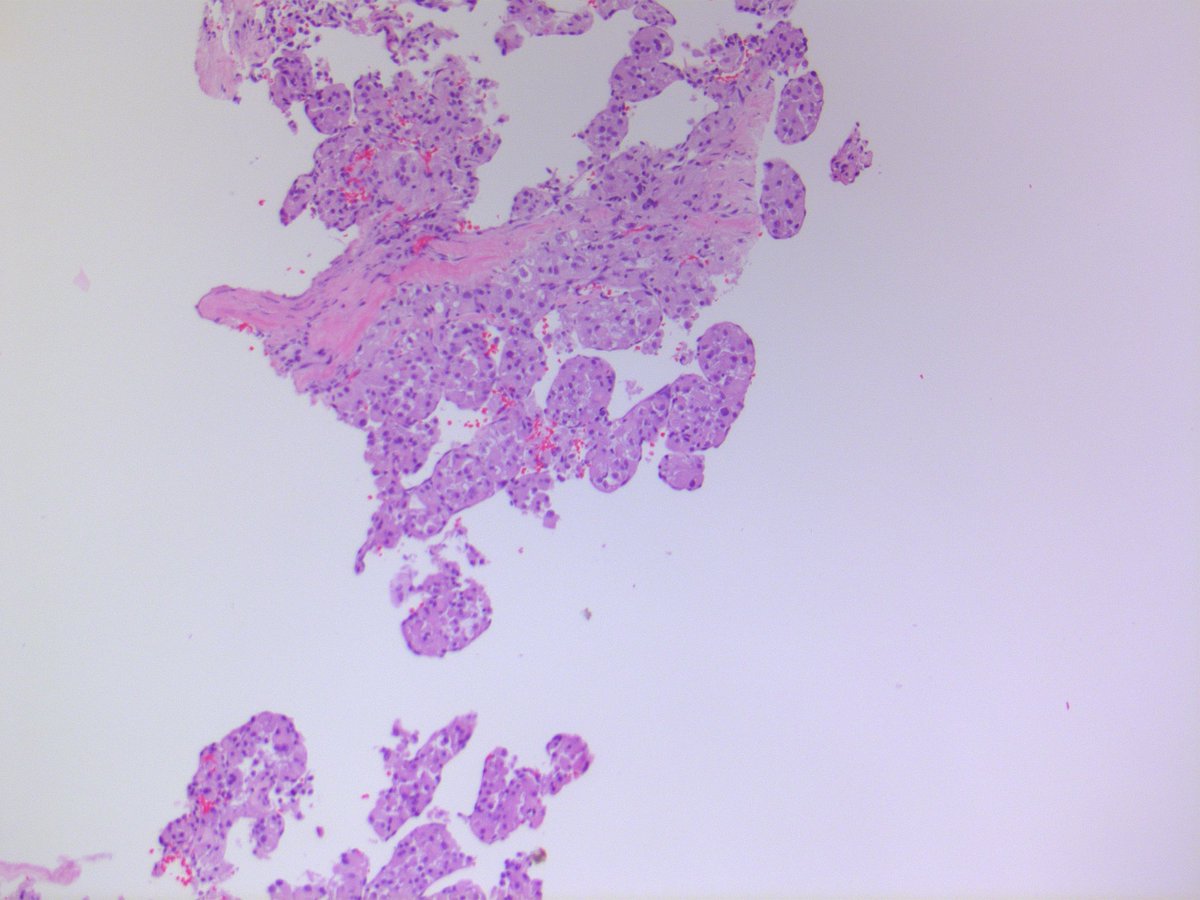



Brendan Dickson Md Alveolar Soft Part Sarcoma Ihc Tfe3 Ngs Aspscr1 Tfe3 Nb Nests Of Epithelioid Cells With Abundant Granular Cytoplasm Bland Nuclei With Macronucleoli Systemic Therapies Limited Potential Promise With Immune




Combining Integrated Genomics And Functional Genomics To Dissect The Biology Of A Cancer Associated Aberrant Transcription Factor The Aspscr1 Tfe3 Fusion Oncoprotein Kobos 13 The Journal Of Pathology Wiley Online Library




Genetic Diversity In Alveolar Soft Part Sarcoma A Subset Contain Variant Fusion Genes Highlighting Broader Molecular Kinship With Other Mit Family Tumors Dickson Genes Chromosomes And Cancer Wiley Online Library



Cytotest Com



Aspscr1 Tfe3 Fusion Translocation Fish Probe Kit 10 Tests Diagnostic Technology




Tfe3 Aspscr1 Prcc Tico Europe




Alveolar Soft Part Sarcomas Molecular Pathogenesis And Implications For Novel Targeted Therapies




Genomics Morphoproteomics And Treatment Patterns Of Patients With Alveolar Soft Part Sarcoma And Response To Multiple Experimental Therapies Molecular Cancer Therapeutics



Cell Com
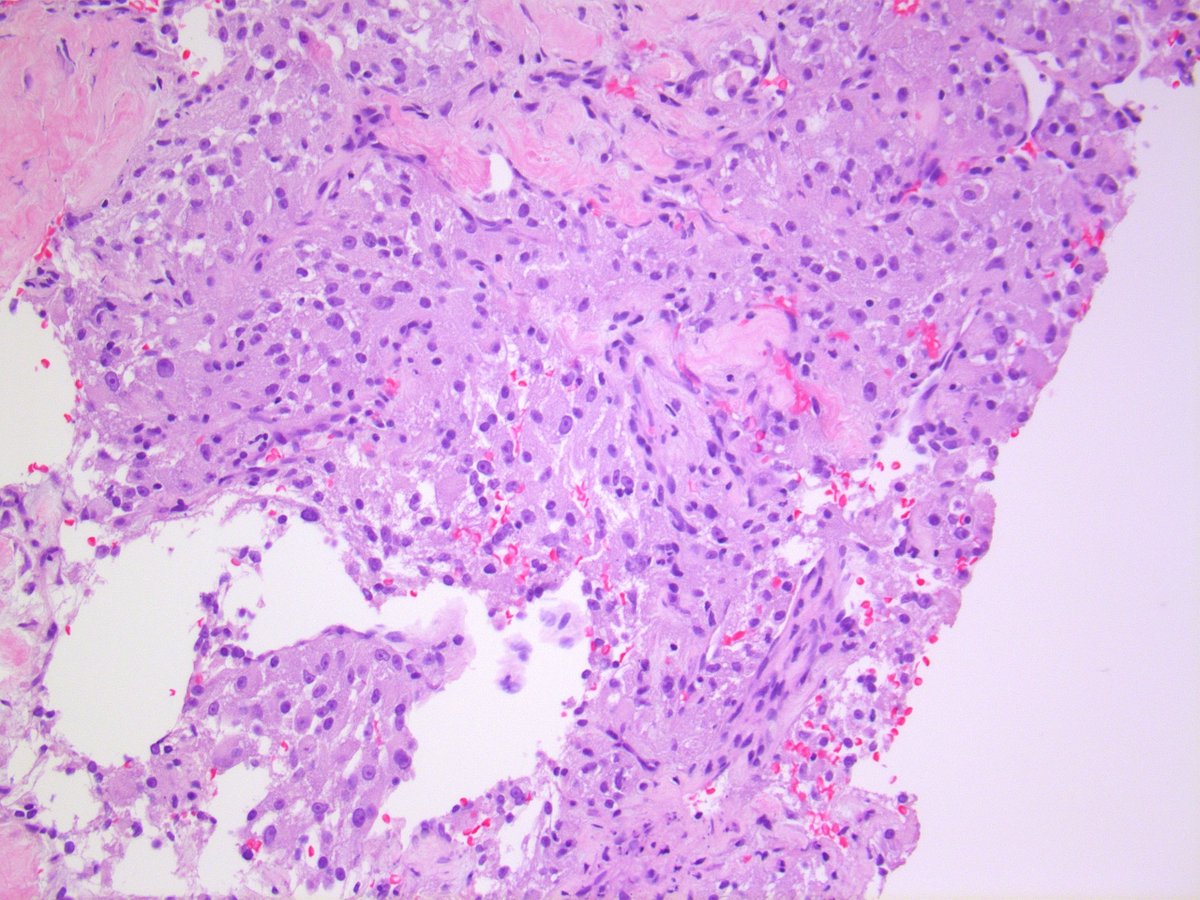



Brendan Dickson Md Alveolar Soft Part Sarcoma Ihc Tfe3 Ngs Aspscr1 Tfe3 Nb Nests Of Epithelioid Cells With Abundant Granular Cytoplasm Bland Nuclei With Macronucleoli Systemic Therapies Limited Potential Promise With Immune



Tfe3 Transcription Factor
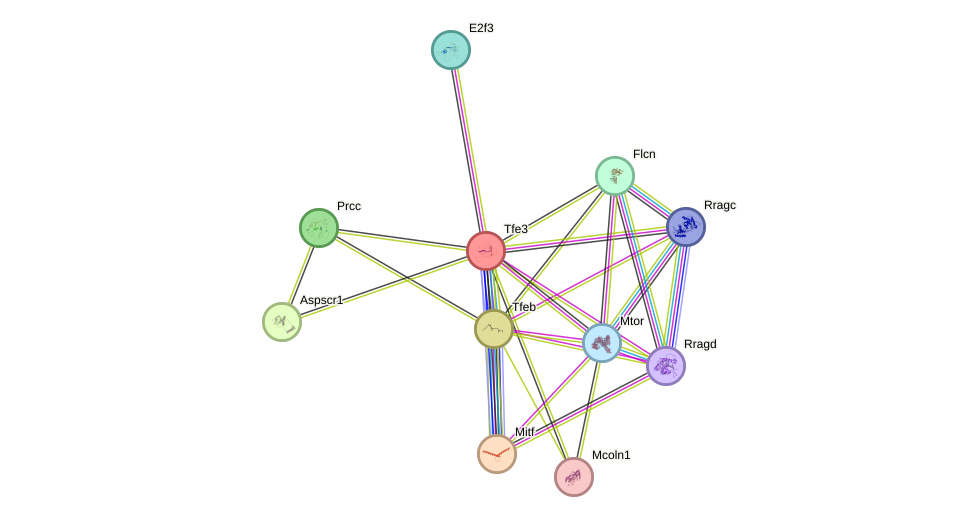



Tfe3 Protein Mouse String Interaction Network



Cell Com




Aspl Tfe3 Oncoprotein Regulates Cell Cycle Progression And Induces Cellular Senescence By Up Regulating P21 Sciencedirect




Tfeb And Tfe3 Linking Lysosomes To Cellular Adaptation To Stress Abstract Europe Pmc




Molecular Landscape In Alveolar Soft Part Sarcoma Implications For Molecular Targeted Therapy Sciencedirect




Modeling Alveolar Soft Part Sarcoma Unveils Novel Mechanisms Of Metastasis Cancer Research




Aspscr1 Gene Genecards Aspc1 Protein Aspc1 Antibody




Recombinant Anti Tfe3 Antibody Epr Bsa And Azide Free Ab




Alveolar Soft Part Sarcoma Of The Bladder With Aspscr1 Tfe3 Gene Fusion As A Secondary Malignancy Sciencedirect




Alveolar Soft Part Sarcomas Molecular Pathogenesis And Implications For Novel Targeted Therapies



Genatlas Sheet




Combining Integrated Genomics And Functional Genomics To Dissect The Biology Of A Cancer Associated Aberrant Transcription Factor The Aspscr1 Tfe3 Fusion Oncoprotein Kobos 13 The Journal Of Pathology Wiley Online Library



1



Aspscr1 Tfe3 Fusion Translocation Fish Probe Kit 10 Tests Diagnostic Technology



Cancerres crjournals Org




X 17 P11 Q25 Aspscr1 Tfe3 Translocation Renal Cell Carcinomas Download Scientific Diagram



Bmccancer Biomedcentral Com
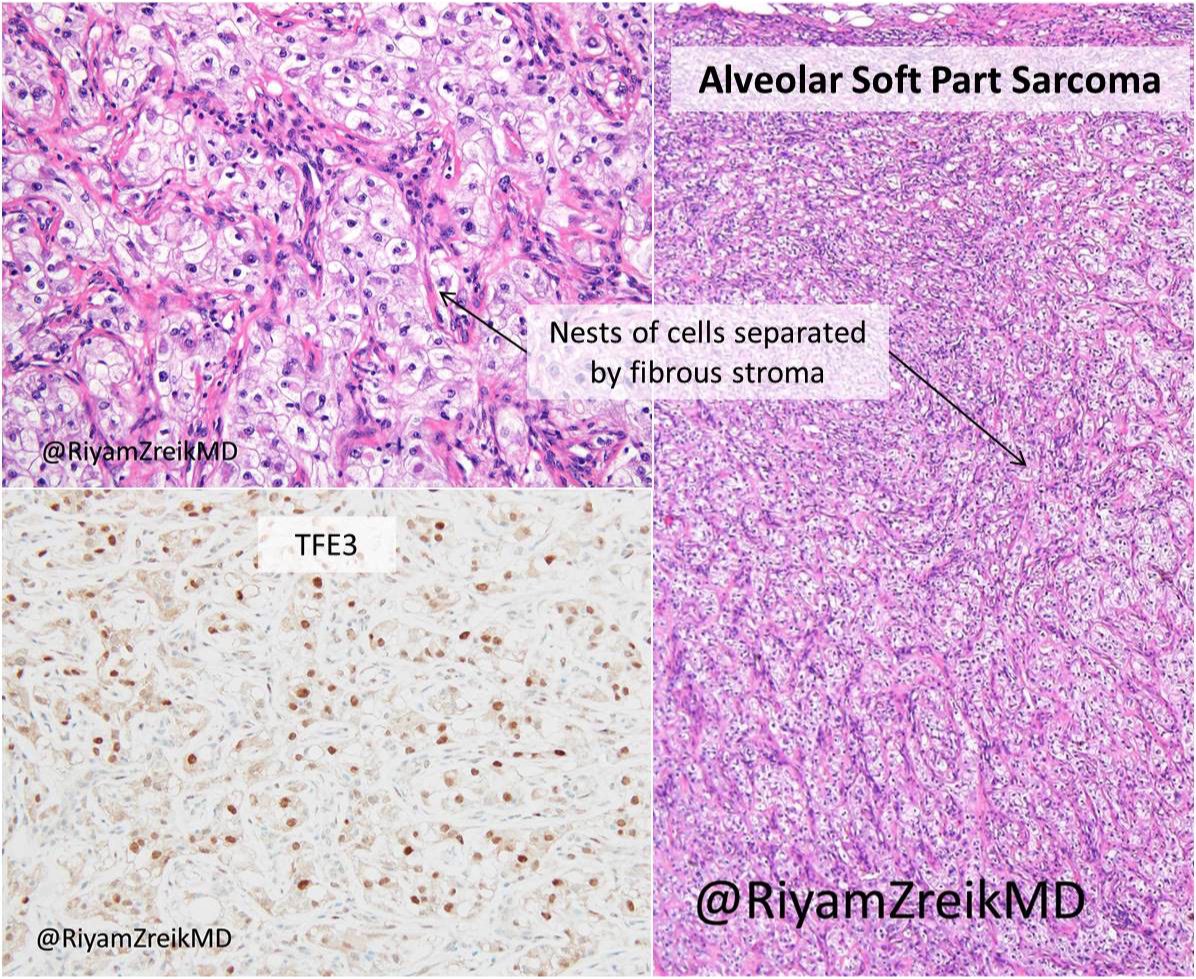



O Xrhsths Texas Soc Of Pathol Sto Twitter Alveolar Soft Part Sarcoma Is A Rare Tumor Of Deep Soft Tissue Characterized By Aspscr1 Tfe3 Fusion Aspscr1 Alveolar Soft Part Sarcoma Critical Region
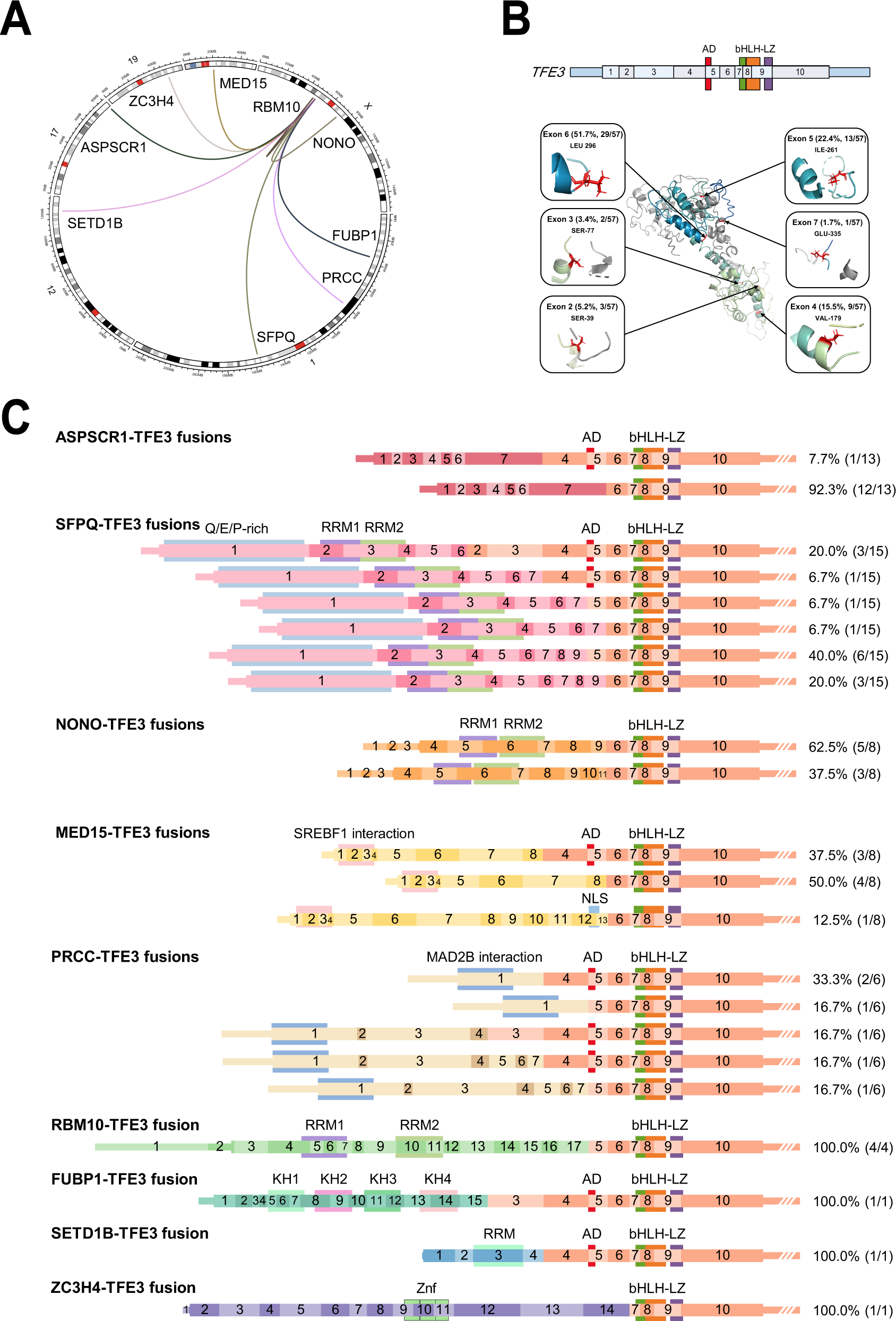



Integrated Exome And Rna Sequencing Of Tfe3 Translocation Renal Cell Carcinoma Nature Communications



Tfe3 Transcription Factor




Technique For Differentiating Alveolar Soft Part Sarcoma From Other Tumors In Paraffin Embedded Tissue Comparison Of Immunohistochemistry For Tfe3 And Cd147 And Of Reverse Transcription Polymerase Chain Reaction For Aspscr1 Tfe3 Fusion Transcript




Combining Integrated Genomics And Functional Genomics To Dissect The Biology Of A Cancer Associated Aberrant Transcription Factor The Aspscr1 Tfe3 Fusion Oncoprotein Kobos 13 The Journal Of Pathology Wiley Online Library



Clincancerres crjournals Org




Validation Of Potential Therapeutic Targets In Alveolar Soft Part Sarcoma An Immunohistochemical Study Utilizing Tissue Microarray Lazar 09 Histopathology Wiley Online Library




Tfe3 Fusions Activate Met Signaling By Transcriptional Up Regulation Defining Another Class Of Tumors As Candidates For Therapeutic Met Inhibition Cancer Research



Renal Cell Carcinoma Ct
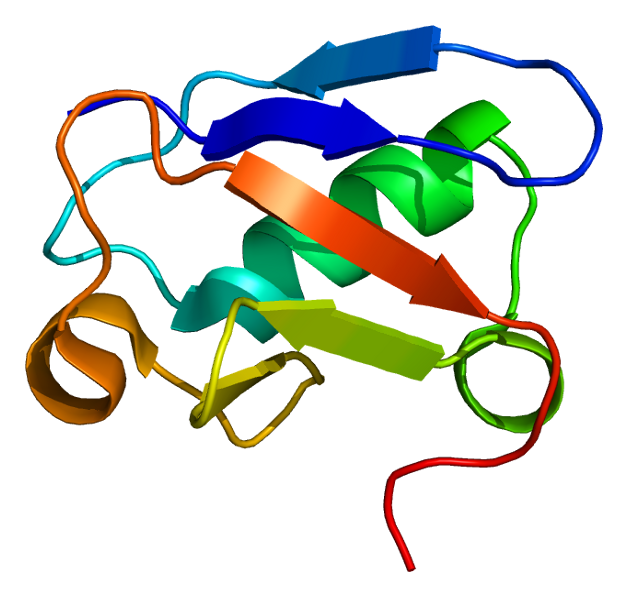



Aspscr1 Wikipedia
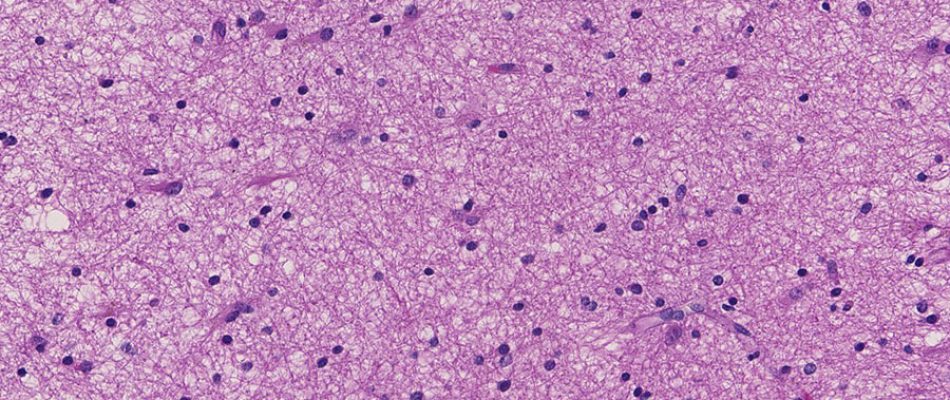



Largest Trial Ever Performed In Alveolar Soft Part Sarcoma Results Published 21 Eortc Eortc




Angiogenesis Promoting Gene Patterns In Alveolar Soft Part Sarcoma Clinical Cancer Research




Technique For Differentiating Alveolar Soft Part Sarcoma From Other Tumors In Paraffin Embedded Tissue Comparison Of Immunohistochemistry For Tfe3 And Cd147 And Of Reverse Transcription Polymerase Chain Reaction For Aspscr1 Tfe3 Fusion Transcript
コメント
コメントを投稿